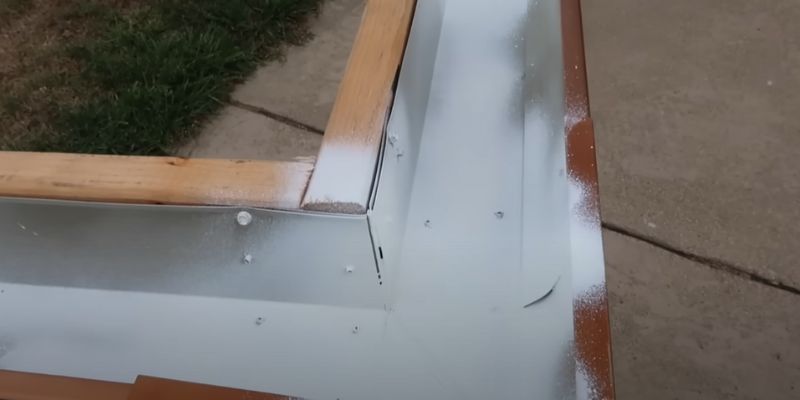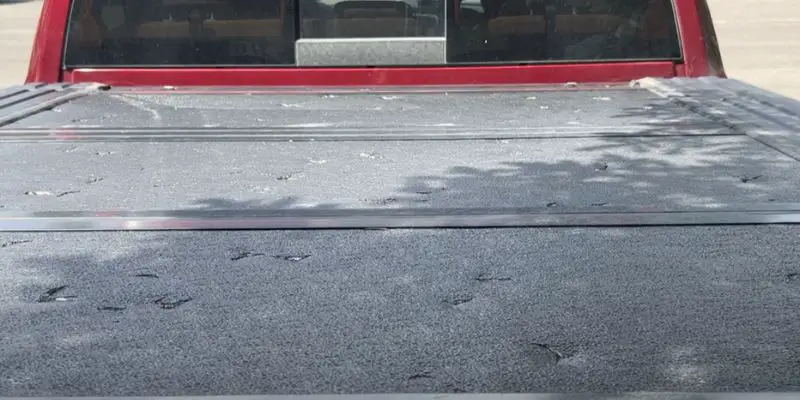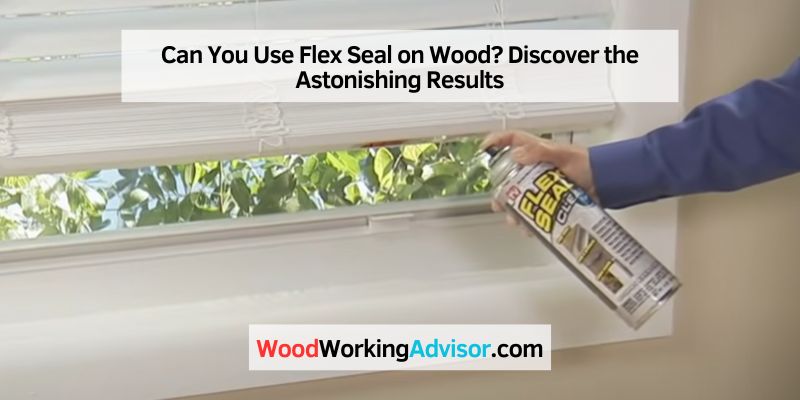Yes, Flex Seal can be used on wood surfaces to provide a waterproof and durable seal. Flex Seal is a versatile product that can be used for various applications, including sealing leaks, cracks, and gaps.
When applied to wood, it forms a protective barrier that helps prevent water damage and decay. Whether you need to seal a leaky wooden roof or protect outdoor wooden furniture from the elements, Flex Seal can be a reliable option.
Its strong adhesive properties and waterproof seal make it an effective solution for keeping wood surfaces dry and preventing further damage. In addition to its practicality, Flex Seal is also easy to use, making it a popular choice for DIY enthusiasts and professionals alike.
Flex Seal: A Game Changer For Wood Projects
When it comes to woodworking projects, one of the biggest challenges is finding a reliable and long-lasting solution for waterproofing wood surfaces and repairing cracks and leaks. That’s where Flex Seal comes in. This innovative product has proven to be a game changer for wood projects, providing a simple and effective way to protect and preserve wood surfaces.
Waterproofing Wood Surfaces
Wood is a natural material that is prone to damage when exposed to water and moisture. This can lead to rotting, warping, and a decrease in overall durability. Thankfully, Flex Seal is specifically designed to create a waterproof barrier on wood surfaces, preventing water from seeping in and causing damage.
Flex Seal can be easily applied to the surface of the wood using a brush, roller, or spray, depending on the size of the project. Once applied, it quickly dries and forms a flexible and protective coating. This coating is resistant to water, making it ideal for outdoor wood surfaces like decks, fences, and furniture.
Not only does Flex Seal protect wood from water damage, but it also helps to preserve the natural beauty of the material. Unlike traditional sealants or paint, Flex Seal leaves a transparent finish, allowing the natural grain and color of the wood to shine through.
Repairing Cracks And Leaks
In addition to waterproofing, Flex Seal is also an excellent solution for repairing cracks and leaks in wood. Whether you’re dealing with small cracks in a wooden wall or larger leaks in a wooden boat, Flex Seal can effectively seal and reinforce the damaged areas.
The thick and flexible formula of Flex Seal allows it to fill in gaps and cracks, creating a strong and durable bond. Simply apply the product directly to the damaged area and let it dry. The result is a repaired surface that is as good as new.
Flex Seal can be used on a variety of wood surfaces, including plywood, particleboard, and hardwood. It is perfect for repairing outdoor structures like sheds, gazebos, and playsets, as well as indoor furniture and fixtures.
When it comes to wood projects, Flex Seal is truly a game changer. It offers a reliable and long-lasting solution for waterproofing wood surfaces and repairing cracks and leaks. Whether you’re a DIY enthusiast or a professional woodworker, Flex Seal is a must-have product for any woodworking project.

How To Apply Flex Seal On Wood
Flex Seal is a popular sealant known for its versatility and effectiveness in sealing leaks and cracks. While it is commonly used on surfaces like metal, rubber, and concrete, many people wonder if it is suitable for wood as well. In this article, we’ll explore the question, “Can you use Flex Seal on wood?” and provide you with step-by-step instructions on how to apply it properly to maximize its effectiveness.
Preparation Steps
Before applying Flex Seal on wood, it’s essential to properly prepare the surface to ensure proper adhesion and long-lasting results. Follow these preparation steps:
- Clean the wood surface thoroughly by removing any dust, dirt, or debris. A damp cloth or brush can be used to wipe away loose particles.
- Inspect the wood for any existing cracks, holes, or damage. Fill these imperfections with a suitable wood filler and allow it to dry completely.
- Smooth the surface by sanding it lightly with fine-grit sandpaper. This step will help the Flex Seal adhere better to the wood.
- Protect surrounding areas by covering them with plastic or painter’s tape to prevent any overspray or accidental seepage.
Application Techniques
Once the wood surface is prepared, it’s time to apply Flex Seal. Consider the following application techniques:
- Spray Application: Hold the can of Flex Seal about 12 to 14 inches away from the wood surface. Start spraying in a steady, sweeping motion, ensuring even coverage. Apply multiple thin coats, allowing each coat to dry completely before applying the next.
- Brush Application: If you prefer using a brush, pour Flex Seal into a separate container. Dip a clean brush into the Flex Seal and apply it to the wood using smooth strokes. Apply thin and even coats, allowing each coat to dry before applying more layers if needed.
Keep in mind that the number of coats required will depend on the condition of the wood and the level of protection desired. It’s always better to apply multiple thin coats rather than a single thick coat for optimal results.
Remember, Flex Seal can take up to 24 hours to fully cure, so be patient and avoid touching or exposing it to moisture until it has dried completely.
By following these preparation steps and application techniques, you can confidently use Flex Seal on wood surfaces and enjoy its sealing capabilities. Give it a try and protect your wooden structures with this versatile sealant.
Understanding The Durability Of Flex Seal On Wood
Flex Seal can be used on wood to create a durable, waterproof seal. By utilizing Flex Seal on wood surfaces, you can effectively protect them from moisture and other outdoor elements. It forms a strong barrier, preventing water damage and extending the lifespan of the wood.
Understanding the Durability of Flex Seal on Wood
Flex Seal is a popular solution for sealing and protecting various surfaces, and it’s natural to wonder about its effectiveness on wood. The durability of using Flex Seal on wood can be examined through its impact on the wood’s longevity and weather resistance, as well as its effect on the wood’s appearance.
Longevity and Weather Resistance
Using Flex Seal on wood enhances its longevity by providing a protective barrier against moisture, UV rays, and other environmental factors. This prevents rot, decay, and deterioration, ultimately prolonging the life of the wood. The weather resistance of Flex Seal ensures that the wood remains shielded from harsh outdoor elements, making it an ideal option for outdoor wood surfaces such as decks, fences, and furniture.
Impact on Wood’s Appearance
Despite its protective qualities, there may be concerns about the visual impact of using Flex Seal on wood. When applied correctly, Flex Seal can maintain the natural beauty of the wood, preserving its appearance while adding a layer of protection. Its clear and tinted options cater to different wood tones, ensuring a seamless blend with the original aesthetic.
In conclusion, using Flex Seal on wood can significantly improve its durability, longevity, weather resistance, and appearance.
Exploring The Versatility Of Flex Seal Products
Flex Seal products have gained immense popularity for their versatility and ability to provide quick fixes for various surfaces. Whether it’s sealing leaks, repairing cracks, or protecting surfaces, Flex Seal has become a go-to solution for many homeowners and DIY enthusiasts. When it comes to wood, Flex Seal offers different types of products that can be effectively used to maintain the integrity and longevity of wooden surfaces. In this article, we will explore the different types of Flex Seal products for wood and their compatibility with various wood types.
Different Types Of Flex Seal For Wood
Flex Seal offers a range of products specifically formulated for wood, ensuring that you have the right solution for your project. Here are some of the different types of Flex Seal products for wood:
- Flex Seal Liquid: Liquid Flex Seal is a versatile option that can be applied to wood surfaces in a smooth and even manner. It penetrates deep into the wood, creating a strong bond that helps prevent leaks and protects against moisture damage.
- Flex Seal Spray: The spray variant of Flex Seal is perfect for those hard-to-reach areas and intricate woodwork. With its easy application, the spray forms a protective barrier on the wood surfaces, ensuring a waterproof and long-lasting solution.
- Flex Seal Clear: If you are looking for a discreet solution, Flex Seal Clear is an excellent choice. This transparent formula is ideal for maintaining the natural beauty of wood while providing the same level of protection and durability.
Compatibility With Various Wood Types
No matter what type of wood you’re working with, Flex Seal products offer excellent compatibility and adhesion. Whether it’s pine, cedar, plywood, or any other wood species, Flex Seal ensures a strong and reliable bond.
Flex Seal products’ compatibility goes beyond just the wood itself. They can be used on a wide range of wooden surfaces, including decks, fences, furniture, and even wooden boats. This versatility makes Flex Seal an ideal choice for all your wood sealing and protection needs.
Remember to clean and prepare the wood surface properly before applying Flex Seal. Make sure the surface is dry, and free from dirt, dust, and any loose particles to achieve the best results.
Flex Seal On Wood: Real-life Success Stories
Finding a reliable solution to repair and protect wood surfaces can be a challenging task. Fortunately, Flex Seal has emerged as a game-changer when it comes to wood restoration. With numerous success stories from DIY enthusiasts and notable wood restoration projects, Flex Seal on Wood has proven its effectiveness time and time again. In this section, we will delve into some real-life success stories, providing testimonials from those who have experienced the remarkable results firsthand and highlighting notable wood restoration projects that have benefited from Flex Seal.
Testimonials From Diy Enthusiasts
Don’t just take our word for it – listen to what DIY enthusiasts have to say about their experience with using Flex Seal on Wood. These real-life success stories will give you the confidence to tackle your own wood repair projects with Flex Seal.
“I had an old wooden deck that was showing signs of wear and tear. I decided to give Flex Seal a try, and I couldn’t be happier with the results! The spray easily covered all the cracks and imperfections, creating a tight barrier that protected my deck from further damage. It saved me time and money compared to traditional restoration methods.” – John D., DIY enthusiast.
“Flex Seal worked like magic on my wooden fence. It was starting to look weathered and had some splintering. After applying a few coats of Flex Seal, the fence looked brand new. It’s amazing how a simple product can make such a big difference. I highly recommend it!” – Sarah T., DIY enthusiast.
Notable Wood Restoration Projects
The versatility of Flex Seal extends beyond individual DIY projects, as it has been successfully used in notable wood restoration projects. These projects highlight the power and effectiveness of Flex Seal, not only in transforming the appearance of wood but also in providing long-lasting protection.
| Project | Description |
|---|---|
| Historic Log Cabin Restoration | Flex Seal was instrumental in restoring a historic log cabin that had suffered from extensive water damage. By applying Flex Seal to the cracks and gaps in the logs, the cabin was not only restored to its former glory but also protected from future water damage. |
| Deck Overhaul | A worn-out deck was given a new lease on life with the help of Flex Seal. By applying Flex Seal to the entire deck surface, the wood was rejuvenated, and the waterproof seal prevented further damage from moisture. |
These notable wood restoration projects serve as a testament to the effectiveness of Flex Seal on Wood. Whether you’re a DIY enthusiast or undertaking a large-scale restoration project, Flex Seal is the reliable solution you can count on to revitalize and protect your wood surfaces.

Frequently Asked Questions Of Can You Use Flex Seal On Wood
How Long Will Flex Seal Last On Wood?
Flex Seal can last a long time on wood surfaces, providing a strong and durable seal that helps protect against water damage, leaks, and other issues. With proper application and maintenance, you can expect Flex Seal to last for many years on wood.
How Well Does Flex Seal Stick To Wood?
Flex Seal sticks exceptionally well to wood surfaces, providing a strong and durable bond. Its unique adhesive properties create a watertight seal that is resistant to moisture and weathering. Use Flex Seal to protect and repair wood structures, furniture, and other wooden items efficiently.
What Does Flex Seal Not Stick To?
Flex Seal does not stick to surfaces that are oily, greasy, dirty, or wet. It also does not adhere well to certain plastics like polypropylene and polyethylene. Additionally, it may not bond with Teflon, silicone, or frozen surfaces.
Can You Remove Flex Seal From Wood?
Yes, Flex Seal can be removed from wood.
Conclusion
Flex Seal can be effectively used on wood to seal and protect it from moisture and other elements. The versatile nature of Flex Seal makes it a convenient and efficient solution for various wood sealing needs. By following the proper application instructions, you can ensure long-lasting and durable protection for your wooden surfaces.


